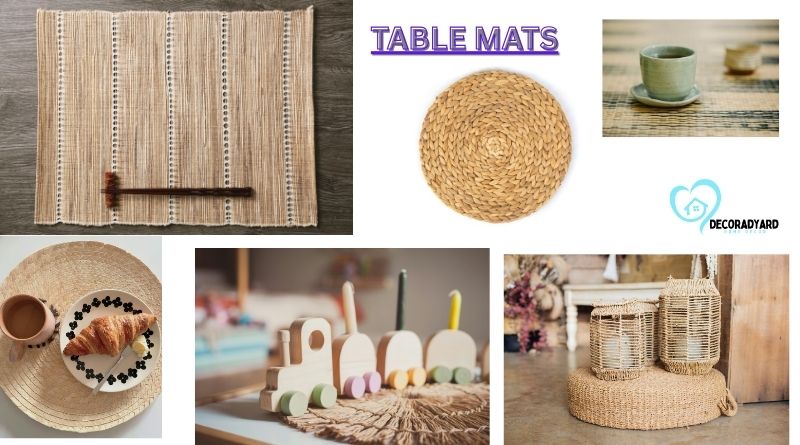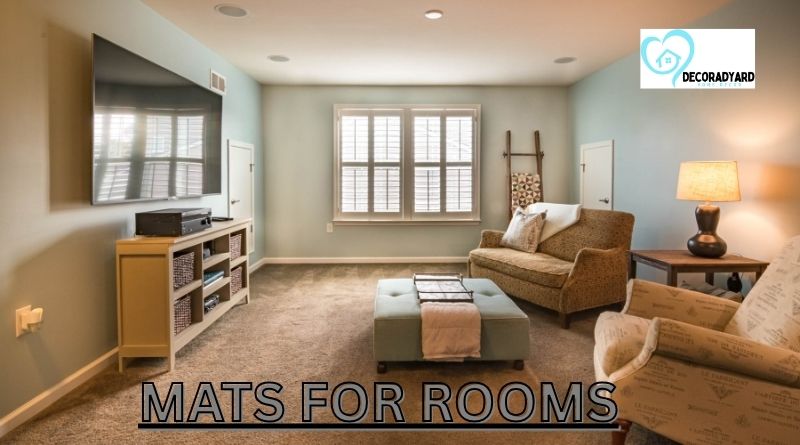When it comes to designing and decorating a home, every detail counts. From wall colors to furniture arrangements, each choice contributes to the overall ambiance of a room. One element that is often overlooked but holds significant value is mats. Mats for rooms are not just practical items; they can enhance comfort, protect flooring, and even elevate the aesthetic appeal of any space. Whether you are looking to add a cozy touch to your living room, a soft landing for your bedroom, or functional mats for dining areas, choosing the right mat is essential.
The Practical Benefits of Mats for Rooms
Mats serve multiple practical purposes in a home. Firstly, they provide a protective layer for your flooring, shielding hardwood, tiles, or carpets from wear and tear. This is especially important in areas with heavy foot traffic, such as entryways or kitchens, where spills and dirt can quickly damage flooring surfaces. Secondly, mats can offer additional safety by reducing the risk of slipping, particularly in homes with children or elderly residents. Mats with non-slip backings are ideal for bathrooms or near doorways where moisture can accumulate. Additionally, mats contribute to cleanliness by trapping dust and debris, preventing them from spreading throughout the home.
Choosing the Right Material
Selecting the appropriate material is crucial when investing in mats for rooms. Materials such as cotton, wool, jute, and synthetic fibers each offer distinct advantages. Cotton mats are soft, machine-washable, and perfect for bedrooms or living spaces. Wool mats are more luxurious, durable, and provide natural insulation, making them excellent for colder climates. Jute and other natural fiber mats are eco-friendly and bring a rustic charm to interiors, while synthetic mats are highly durable, easy to clean, and often resistant to stains. Understanding the intended use and traffic level of a room will help determine the most suitable material for a mat, ensuring both functionality and longevity.
Mats and Room Decor
Beyond practicality, mats play a significant role in enhancing the visual appeal of a room. A well-chosen mat can define spaces, add color, and create a welcoming atmosphere. For instance, a bright, patterned mat in a neutral living room can serve as a focal point, while a subtle, monochrome mat in a minimalist bedroom maintains the room’s serenity. Moreover, mats can complement other elements such as curtains, furniture, and wall art, tying the decor together seamlessly. Modern designs even offer reversible mats, allowing homeowners to change the look of a room without a complete redecorating effort.
Table Mats: Function Meets Style

In addition to floor mats, table mats are an essential accessory for dining and kitchen spaces. Table mats protect surfaces from scratches, spills, and heat damage while adding a decorative element to the table setting. Available in a variety of materials—such as bamboo, cork, silicone, and fabric—table mats can match both casual and formal dining styles. Beyond protection, table mats also help organize dining arrangements, defining individual spaces for plates and utensils. Coordinating floor mats with table mats can create a cohesive design theme in open-plan living and dining areas, enhancing both functionality and aesthetics.
Placement Tips for Maximum Impact
Proper placement of mats is key to achieving both functionality and style. In living rooms, mats placed under coffee tables or in seating areas can create cozy conversation zones. In bedrooms, a soft mat beside the bed provides comfort underfoot during morning routines. Entryways benefit from durable mats that trap dirt and moisture, reducing the need for frequent cleaning. Dining areas, meanwhile, benefit from table mats that protect furniture while adding color and texture. Layering mats—floor and table—can create a dynamic design effect, combining textures and patterns for a sophisticated look. When arranging mats, consider the size, shape, and proportion relative to the room and surrounding furniture to maintain balance and harmony.
Maintenance and Longevity
Maintaining mats for rooms, including table mats, is essential to ensure they remain attractive and functional over time. Regular vacuuming, spot cleaning, and occasional deep washing can prevent dirt buildup and preserve the mat’s texture and color. Mats made from natural fibers may require gentle cleaning, while synthetic options can often withstand more rigorous maintenance. Rotating mats periodically also helps prevent uneven wear and prolongs their lifespan. Investing in high-quality mats not only enhances comfort and style but also ensures long-term durability, making them a worthwhile addition to any home.
In conclusion, mats for rooms—whether floor mats or table mats—are more than just decorative accessories. They are practical, stylish, and versatile elements that improve comfort, safety, and aesthetics. By carefully selecting the right material, design, and placement, homeowners can transform their spaces into inviting and functional environments. Whether you aim to create a cozy bedroom, a welcoming living room, a functional entryway, or an elegant dining area, mats provide an effective and elegant solution that balances form and function.



